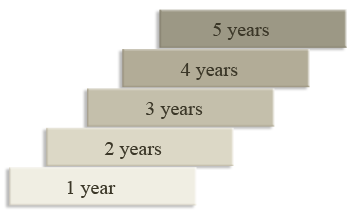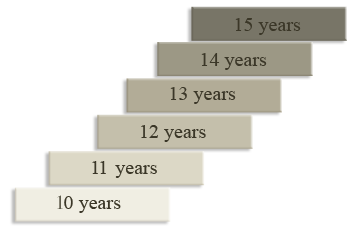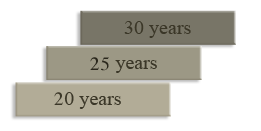One strategy used by StateTrust to mitigate interest rate risk, credit risk and sector risk at the same time is known as laddering. If you picture a ladder, then each step of the ladder symbolizes a year when some of the bonds that you are holding reach maturity. Maturity is simply the period of time left before a bond expires and the principal is returned to the investor. Once a bonds matures, the investor is able to substitute for a new bond with a maturity extending to the outer years of the ladder.
You can choose how long your laddered portfolio is. If you are risk-averse or getting close to retirement, then you may want to reduce volatility in your laddered or fixed income portfolio. So you might opt for a fairly short ladder that runs from one to five years.

If you do not plan on retirement or having a large expenditure for an extended period of time, then you could decide on a ladder that starts with bonds that mature after ten or fifteen years.  If you are not risk averse and expect interest rates to decline or stay low for years to come, then you can choose an extended ladder, where your bonds would mature after 20 or 30 years.
If you are not risk averse and expect interest rates to decline or stay low for years to come, then you can choose an extended ladder, where your bonds would mature after 20 or 30 years.  Portfolios with an average duration greater than seven are likely to experience higher volatility due to interest rate fluctuations and are also able to capture a higher absolute rate of return.
Portfolios with an average duration greater than seven are likely to experience higher volatility due to interest rate fluctuations and are also able to capture a higher absolute rate of return.
Fixed Income Best Practices